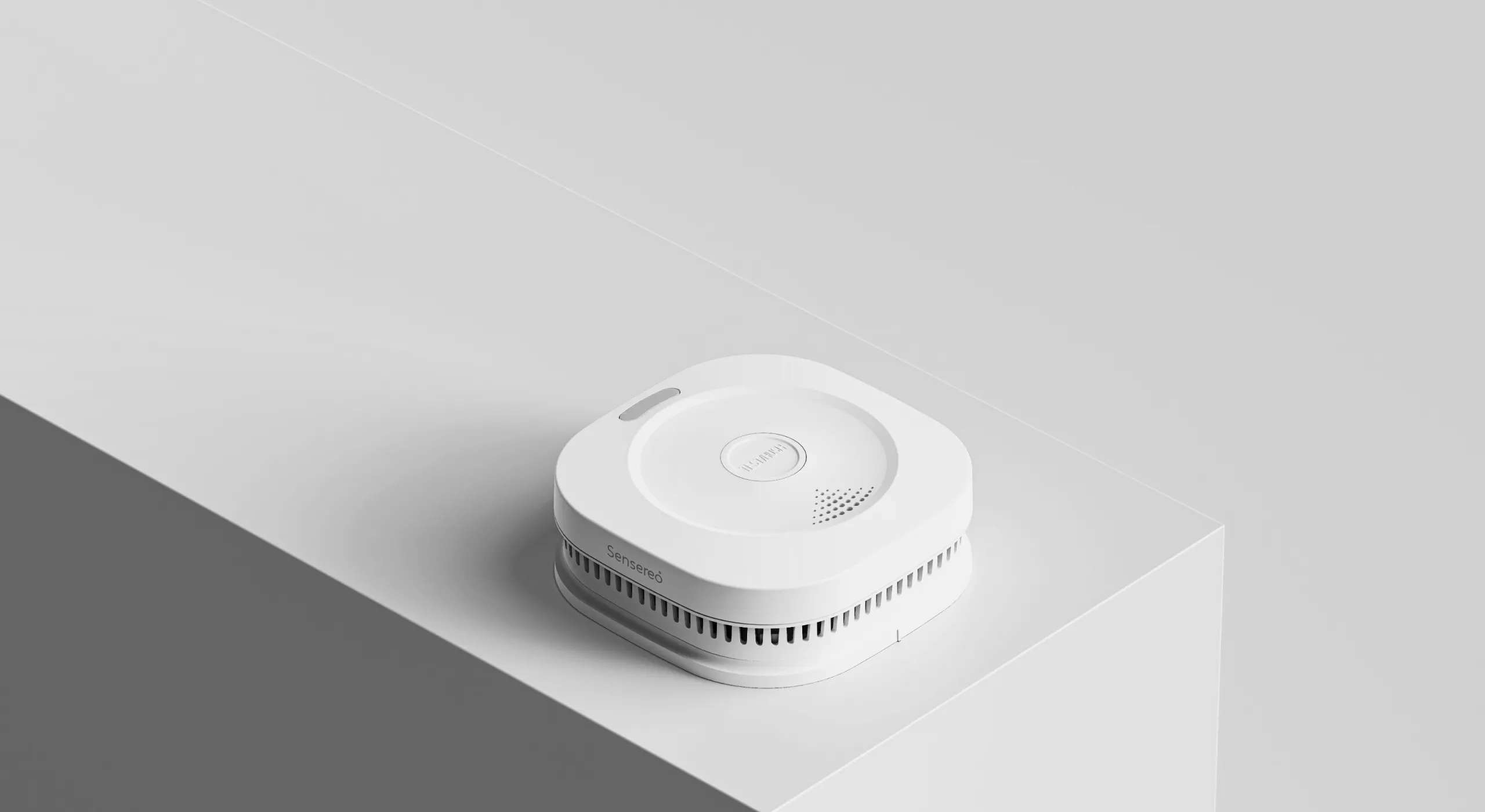Wireless interconnected smoke alarms are honestly a huge part of what helps us feel safe at home, giving us that peace of mind by letting us know about any potential danger. But what happens when these super important devices start acting up? Whether you’ve got the latest smart smoke detectors or the more traditional RF smoke alarms, you might run into things like false alarms, that constant beeping, or really frustrating connectivity problems. Don’t worry, you’re not alone!
I put this friendly guide together to help you out. We’ll walk through the most common problems I’ve seen and give you clear, step-by-step solutions so you can be confident your wireless smoke alarm system is always ready to protect you. From low battery alerts and connection drops to false alarms caused by things in the environment and even outdated firmware (especially with Matter over Thread devices), we’ve got you covered.
Identifying Different Alarm Sounds and Patterns
| Alarm Sound/Pattern | Likely Meaning | What You Should Do |
| Single, short chirp every 30-60 seconds | Low Battery | Replace the battery in that specific unit |
| Frequent, random chirps | Dust, False Alarm Trigger,or End-of-Life | Clean the unit, check the room, or replace the unit |
| Continuous, loud siren with flashing light | Smoke/Fire Detected | Evacuate, and call emergency services |
| No sound, but linked alarms sound | RF smoke alarm unit fault or connectivity issue | Test the unit, check its power, and troubleshoot the network |
Your wireless interconnected smoke alarms have their own way of communicating, and if you learn their language, you can save yourself a ton of troubleshooting time.
Think of these sounds as the diagnostic language for your RF smoke alarms.
Environmental Factors Affecting Wireless Alarms
Believe it or not, your home’s environment can be the main culprit behind your smoke alarm headaches. Steam from a hot shower, smoke from burnt toast (we’ve all been there), or even dust and bugs can accidentally set off a false alarm. I’ve also seen rapid temperature changes or really high humidity mess with the photoelectric sensors inside a smart smoke detector. Basically, these alarms work by detecting particles in the air, and things like excess dust or steam can look just like smoke particles to the sensor, triggering an alert. Understanding these environmental triggers can help you prevent a lot of unnecessary scares.
Connectivity Issues in Smart Smoke Detector Networks
In a smart home, smoke detectors often connect to a central network via Wi-Fi, Thread, or similar protocols for app alerts and remote control. However, that’s different from RF-style interconnection, where alarms communicate directly and sound simultaneously in case of smoke. It’s pretty common to run into connectivity issues. This can be caused by Wi-Fi interference, being too far from the hub, or even things like thick walls getting in the way. For the really cutting-edge Matter over Thread devices, an unstable network or an improper setup can easily cause these communication breakdowns. When your linked detectors can’t “talk”, their main safety feature is basically useless.

How to Troubleshoot Your Wireless Smoke Alarm (Step-by-Step)
Okay, now that we’ve covered some common problems, let’s get our hands dirty with some practical, step-by-step solutions. Don’t worry, most of these fixes are super straightforward, and you can probably do them yourself without calling a pro.
Problem 1: The Low Battery Chirp
This is the most frequent complaint I hear, and thankfully, it’s often the easiest to fix:
- Identify the culprit:You’ll want to listen for that specific low-battery chirp. Most wireless interconnected smoke alarms will chirp about once every 30 to 60 seconds.
- Locate the unit: Now you have to pinpoint which specific RF smoke alarm is making the noise. This might take some careful listening, or you could just check your smart alarm’s app.
- Replace batteries:For battery-powered units, go ahead and remove the old batteries and then insert fresh ones. Always use the type they recommend (it’s usually AA, 9V, or special lithium batteries).
Pro tip: I always use a permanent marker to write the current date on new batteries before I pop them in. It makes tracking for my annual replacement so much easier!
- Test:After you’ve replaced the battery, just press the “Test” button to make sure the alarm is working like it should.
- What If This Doesn’t Work? “I replaced the battery, but it’s still chirping! What now?”
Okay, if that happens, it could mean there’s a fault in the unit, dust in the sensor, or it’s an end-of-life signal. Check the manufacturing date on the back of the alarm; smoke alarms typically need to be replaced every 10 years (that’s what the NFPA guidelines recommend).
If your alarm is more than a few years old and still chirping after battery replacement, it might be time to upgrade. This RF interlinked smoke alarm comes with a sealed 10-year battery, meaning you won’t have to deal with battery changes or chirping again for a whole decade.
Problem 2: Resolving False Alarms and Chirping Sounds
False alarms are super annoying, but you can often prevent them:
- Ventilate: If you know it was cooking smoke or steam that triggered it, just open some windows and doors or turn on your exhaust fans.
- Clean the unit: Dust and junk can build up inside and cause false alarms. Gently vacuum around the smoke alarm’s vents using a soft brush attachment. But please, do not use cleaning sprays or chemicals directly on the unit. That stuff can damage the sensors. This goes for both smart smoke detectors and the traditional ones.
- Relocate if necessary: If one particular alarm goes off all the time because of where it’s located (like, it’s too close to a steamy bathroom or right over the stove), you might want to think about moving it further away. Just be sure to stick to safety guidelines for placement.
- Check for insect infestations: This one is rare, but sometimes tiny insects can get inside the unit and trigger the alarm. If cleaning it doesn’t help, you might need to inspect the unit more closely or just replace it if you see any signs of bugs.
Preventive Maintenance for Wireless Smoke Alarm Systems
A little bit of preventive maintenance goes long way in making sure your wireless interconnected smoke alarms are always ready for an emergency.
Creating a Maintenance Schedule
Regular checks are key. For all your RF smoke alarms and smart smoke detectors, I’d recommend sticking to this schedule:
- Monthly: Press the “Test” button on every single alarm to make sure it sounds off.
- Bi-annually: Vacuum around your smoke alarms to get rid of any dust and cobwebs.
- Annually: Replace all the batteries in your battery-powered units and the backup batteries in your hardwired ones. You can also clean the sensor chamber if your device lets you do it safely.
- Check connectivity: For smart systems, I just pop open the app every now and then to make sure all the devices are online and talking to each other.
Optimizing Your Wireless Alarm Network
To cut down on those connectivity headaches, especially if you have Matter over Thread devices, here are a few things to try:
- Router/Hub Placement: Try to put your Wi-Fi router and smart home hub in a central location in your house, and keep it away from big metal objects or other electronics that might cause interference.
- Minimize Interference: Other wireless gadgets like cordless phones or baby monitors can cause interference. I try to space out my wireless devices as much as I can.
- Mesh Networks: If you have a larger home, a Wi-Fi mesh system can give you much stronger and more consistent coverage all over the house, which will benefit your whole network of wireless interconnected smoke alarms.
Knowing When to Upgrade Your System
Even with great maintenance, smoke alarms just don’t last forever. Most manufacturers and safety experts, like the National Fire Protection Association (NFPA), recommend replacing your smoke alarms every 10 years. That goes for all of them, whether they’re traditional RF smoke alarms or fancy smart smoke detector units. You can find the manufacturing date on the back of the unit.
So, if you’re dealing with frequent issues you just can’t seem to solve, or if your current system is just really old, it might be time for an upgrade. Newer models often have better features, stronger connectivity, and improved sensor tech, giving you much better protection and compatibility with new standards like Matter over Thread. Replacing those old units is the best way to make sure your home has the most reliable protection out there. (If you’re curious, you can check here for our matter over thread device.)
By understanding the common issues with both RF smoke alarms and smart smoke detectors and using these troubleshooting steps, you can keep your system in fantastic shape. Whether it’s just replacing batteries, cleaning the sensors, or updating the firmware on your Matter over Thread devices, taking care of these problems quickly will give you back your peace of mind.
Contact us today for some personalized advice and even professional installation services to make sure your home is fully protected!
Reference:




